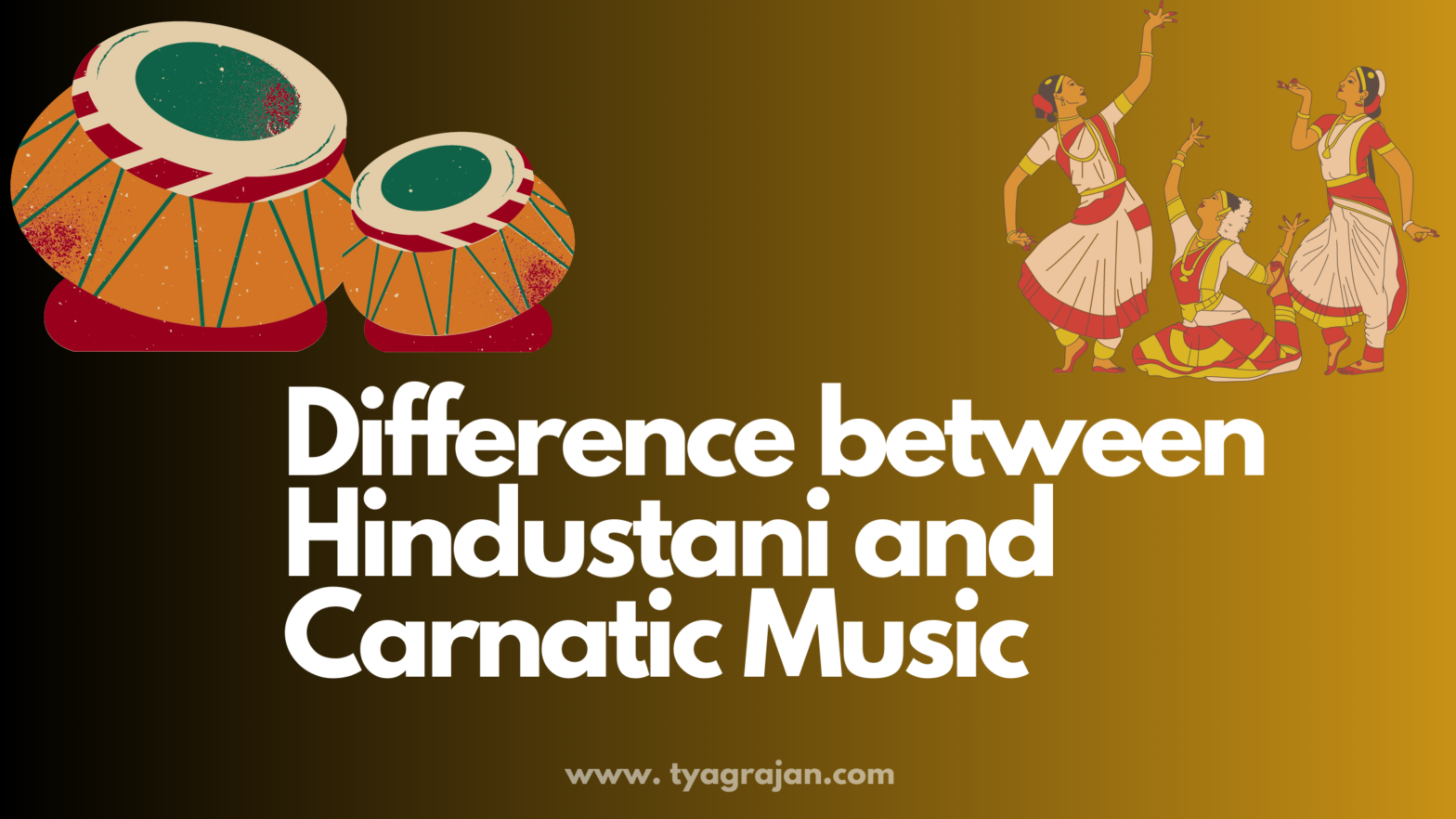Introduction:
Indian Classical Music is a rich cultural heritage that encompasses two major traditions: Hindustani and Carnatic music. While both forms share common roots and principles, they have evolved independently over centuries, resulting in distinct styles, structures, and characteristics. In this article, we explore the fundamental differences between Hindustani and Carnatic music, shedding light on their origins, key features, and cultural significance.
I. Hindustani Music:
Hindustani music, predominantly practiced in North India, is deeply influenced by Persian and Islamic traditions. It has a rich historical lineage dating back to ancient Vedic times. Let’s examine some of the defining features of Hindustani music:
- Raga System: Hindustani music revolves around ragas, which are melodic frameworks consisting of specific ascending and descending note patterns. Ragas are the cornerstone of improvisation and composition in Hindustani music. They are characterized by their unique structures, mood, and ornamentation.
- Diverse Instruments: Hindustani music employs a wide range of instruments, including the sitar, sarod, tabla, harmonium, and various percussion instruments. These instruments play a crucial role in creating the melodic and rhythmic foundations of Hindustani music.
- Emphasis on Vocal Music: Vocal music holds a prominent position in Hindustani music. The art of singing, known as “gayaki,” is highly regarded, with a focus on intricate melodic embellishments, microtonal nuances, and the exploration of various vocal techniques.
- Improvisation: One of the distinguishing features of Hindustani music is the emphasis on improvisation. Musicians engage in spontaneous melodic improvisations known as “alap,” “taan,” and “sargam,” showcasing their creativity and virtuosity within the boundaries of the raga.
- Ghazals and Thumris: Hindustani music encompasses various forms of compositions, including ghazals and thumris. Ghazals are poetic expressions of love and longing, while thumris are semi-classical songs that evoke emotions and express a range of human experiences.
Who is the Father of Hindustani Music?
The father of Hindustani music is widely considered to be Amir Khusrau, a 13th-century musician, poet, and scholar. Khusrau made significant contributions to the development of Hindustani classical music by introducing new ragas, musical instruments, and innovative compositions.
II. Carnatic Music:
Carnatic music, also known as Karnatak music, is the classical music tradition of South India. Rooted in ancient scriptures and influenced by Dravidian cultural traditions, Carnatic music is known for its intricate melodies, rhythmic complexities, and devotional undertones. Let’s explore the key features of Carnatic music:
- Raga System: Similar to Hindustani music, Carnatic music is built upon the framework of ragas. However, the structure and melodic ornamentation of ragas in Carnatic music differ from their Hindustani counterparts. Carnatic ragas are characterized by precise note patterns, specific gamakas (ornamentations), and well-defined rhythmic cycles.
- Vocal Dominance: Carnatic music places great emphasis on vocal music, considering it the purest form of musical expression. Singing is regarded as a divine art, and the vocal repertoire in Carnatic music includes various forms such as varnams, kritis, padams, and javalis.
- Talas and Rhythm: Carnatic music features a complex rhythmic system known as talas. Talas provide the rhythmic structure and framework for compositions and improvisations.
Is Temple Music Carnatic or Hindustani?
Is Temple Music Carnatic or Hindustani? Actually it depends on geographical location, where do you belong?
Temple music, also known as “devotional music” or “bhajan,” holds a significant place in Indian musical traditions. However, when it comes to determining whether temple music is exclusively Carnatic or Hindustani, the answer is not straightforward.
- Carnatic Influence: In South India, temple music has strong associations with Carnatic music. Temples are regarded as the cultural and spiritual hubs where Carnatic music thrives. Devotional songs, known as “kirtanas” or “bhajans,” are sung in Carnatic style, with ragas and rhythmic structures specific to the Carnatic tradition. The compositions of renowned Carnatic composers like Tyagaraja, Muthuswami Dikshitar, and Syama Sastri are frequently performed in temples.
- Hindustani Influence: Similarly, in North India, temple music is intertwined with Hindustani music. Temples often host devotional gatherings where Hindustani vocalists perform devotional compositions known as “bhajans” or “kirtans.” These devotional renditions are infused with Hindustani ragas, talas, and improvisational elements characteristic of the Hindustani tradition. Notable Hindustani musicians like Pandit Bhimsen Joshi and Pandit Jasraj have popularized devotional music through their bhajan renditions.
- Regional Variations: It is important to note that temple music practices may vary across different regions of India. While Carnatic music dominates in South India and Hindustani music in North India, there are regional variations and hybrid forms that emerge from cultural exchanges. For instance, in certain parts of India, temple music may showcase a blend of Carnatic and Hindustani elements, creating a unique and distinct style.
- Cultural Integration: The nature of temple music is deeply rooted in spirituality and devotion rather than being restricted to any particular classical music tradition. Temples serve as platforms for cultural integration, where various musical styles, including Carnatic and Hindustani, find expression. The choice of music in temples ultimately depends on the regional context, traditions, and preferences of the community.
In conclusion, the categorization of temple music as exclusively Carnatic or Hindustani is not accurate, as it varies based on regional influences and cultural practices. Temple music encompasses a blend of styles and is primarily driven by the devotional context in which it is performed. The rich diversity of Indian musical traditions is reflected in the temple music of different regions, allowing for the celebration of both Carnatic and Hindustani elements within this devotional sphere.
